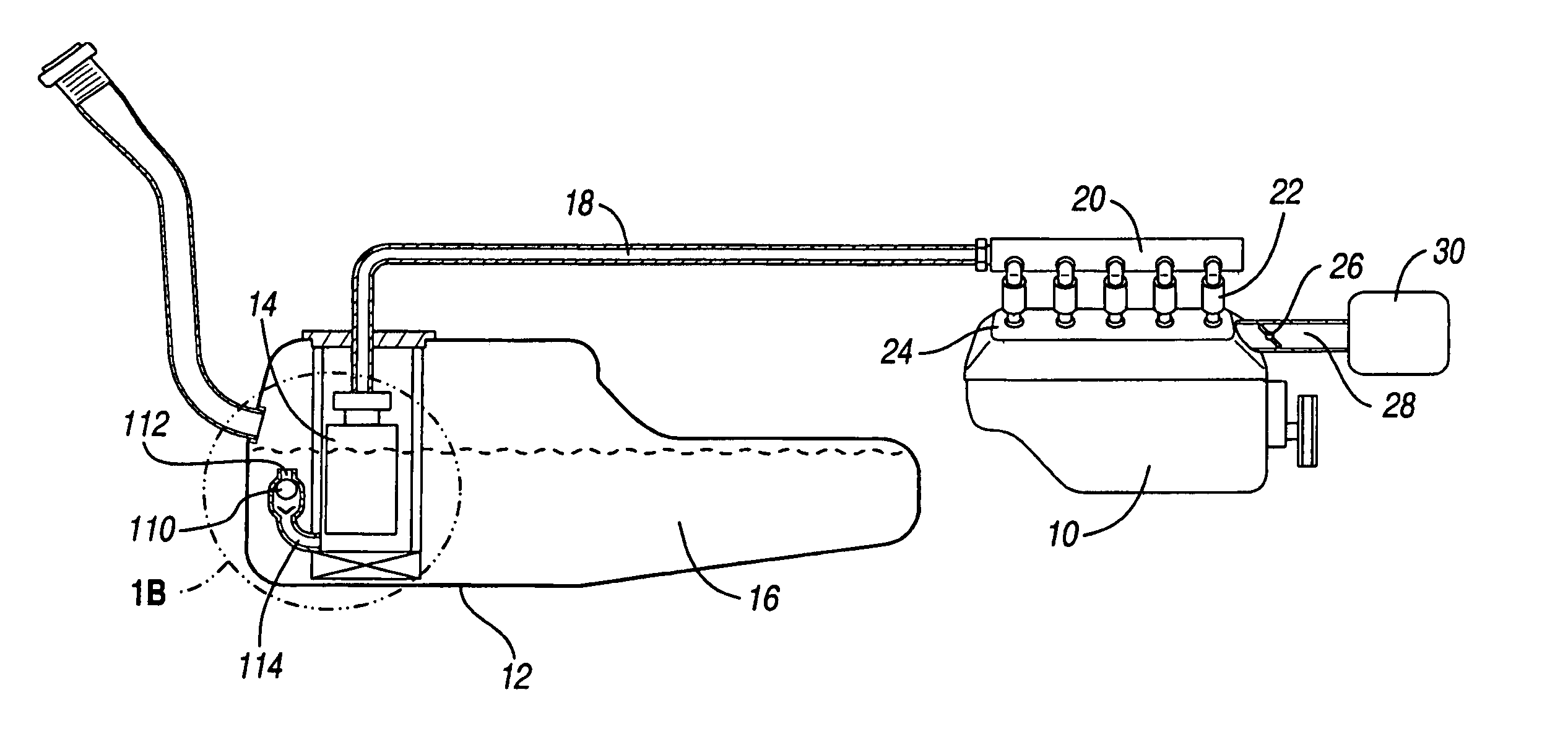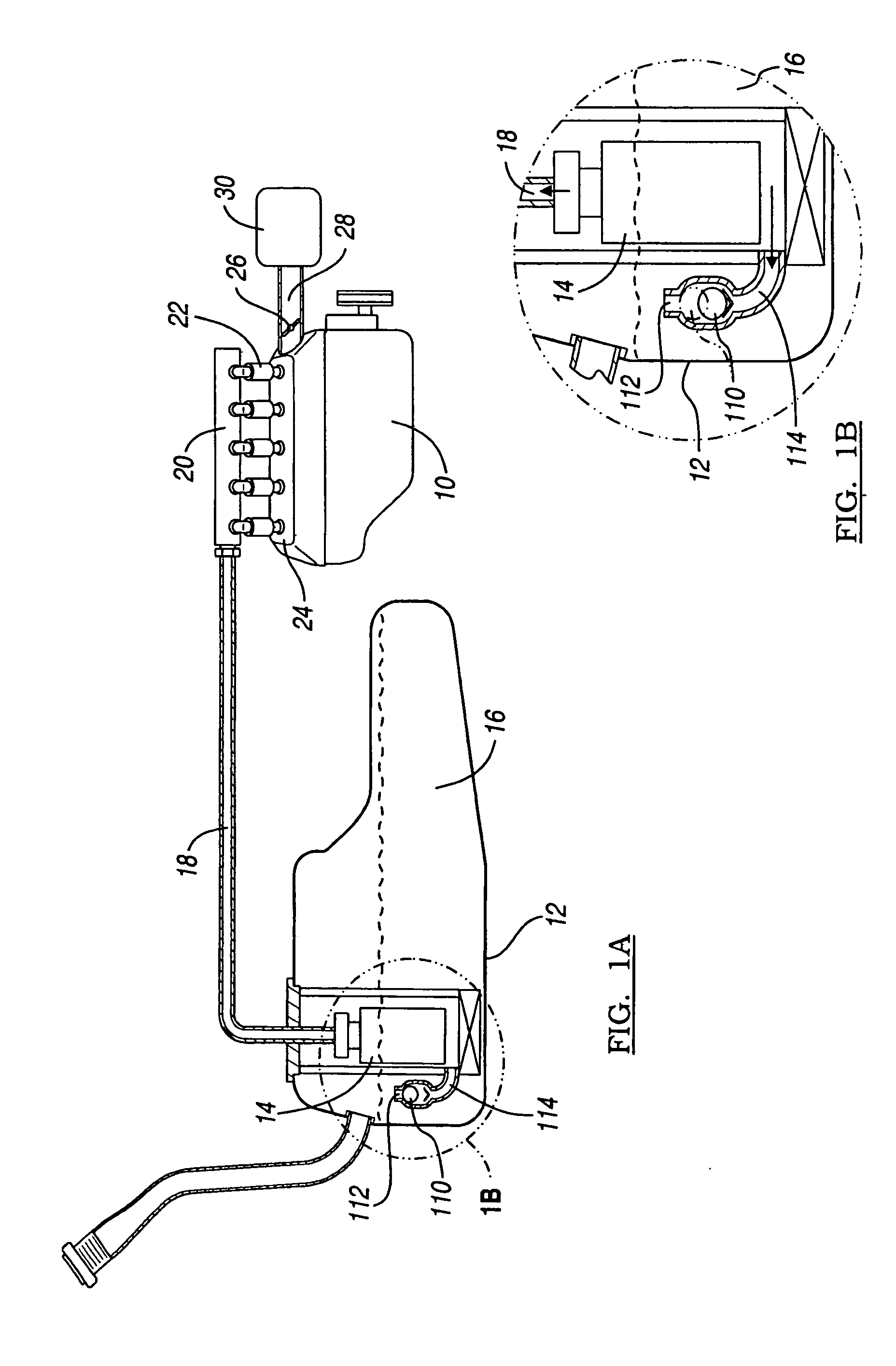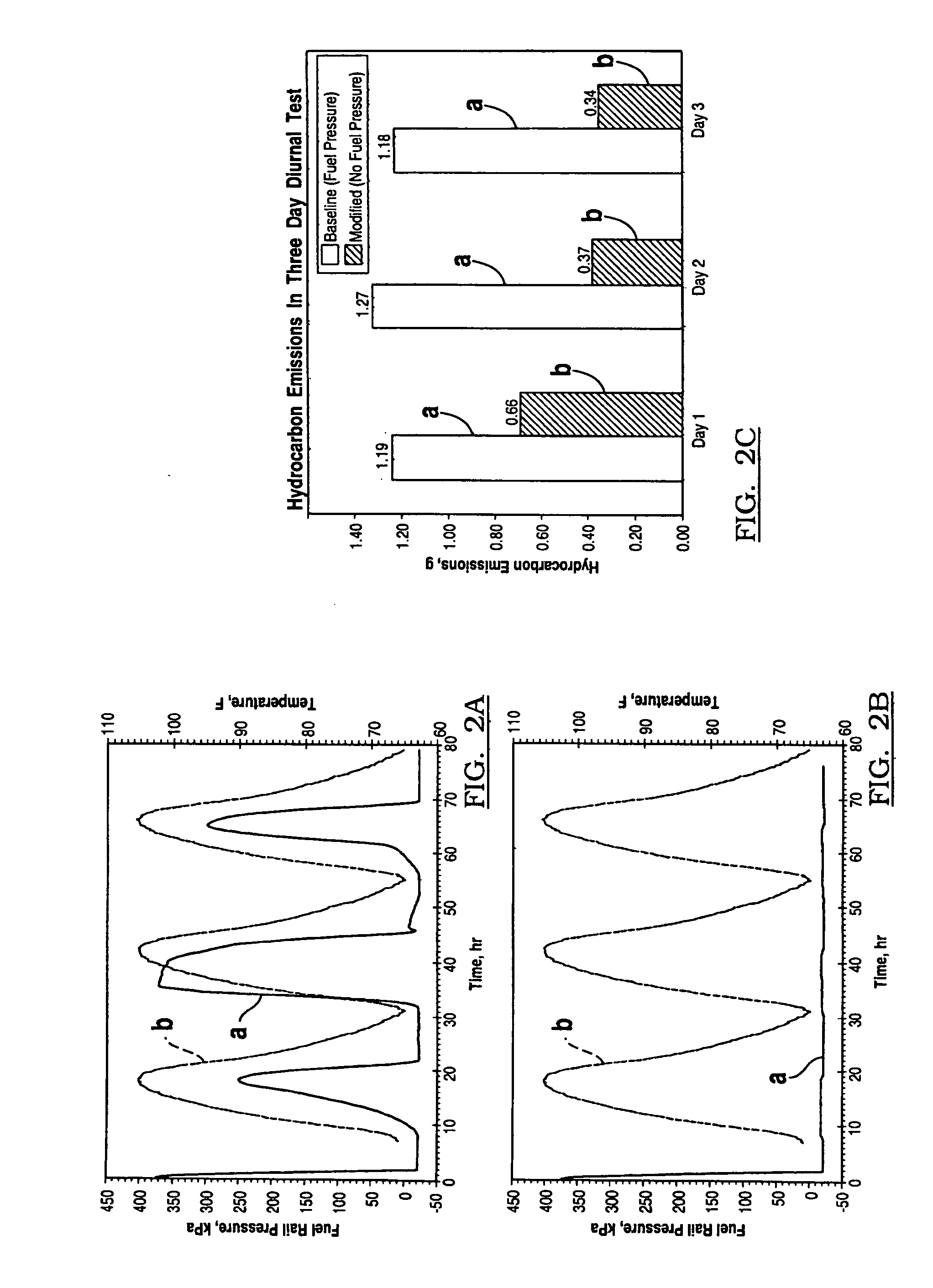Control of induction system hydrocarbon emissions
a technology of induction system and hydrocarbon emission control, which is applied in the direction of machine/engine, fuel injection apparatus, feed system, etc., to achieve the effect of reducing or preventing hydrocarbon emissions and preventing fuel pressure increas
- Summary
- Abstract
- Description
- Claims
- Application Information
AI Technical Summary
Benefits of technology
Problems solved by technology
Method used
Image
Examples
Embodiment Construction
[0011] The following description of the preferred embodiment(s) is merely exemplary in nature and is in no way intended to limit the invention, its application, or uses.
[0012] Referring now to FIG. 1, an internal combustion engine 10 having an intake manifold 24 and fuel tank 12 is illustrated. The engine may be part of a conventional (non-hybrid) vehicle including only the internal combustion engine or part of a hybrid vehicle including the internal combustion engine and an electric motor (not shown). The engine 10 typically burns gasoline, ethanol, and other volatile hydrocarbon-based fuels. During engine operation, fuel 16 is delivered from the fuel tank 12 by a fuel pump 14 through fuel line 18 to a fuel rail 20. Fuel injectors 22 located along fuel rail 20 inject fuel into air intake manifold 24, from where the air / fuel mixture is drawn into cylinders of the engine 10 and combusted to provide power to the engine 10. Air intake into intake manifold 24 is controlled by a valve 2...
PUM
 Login to View More
Login to View More Abstract
Description
Claims
Application Information
 Login to View More
Login to View More - R&D
- Intellectual Property
- Life Sciences
- Materials
- Tech Scout
- Unparalleled Data Quality
- Higher Quality Content
- 60% Fewer Hallucinations
Browse by: Latest US Patents, China's latest patents, Technical Efficacy Thesaurus, Application Domain, Technology Topic, Popular Technical Reports.
© 2025 PatSnap. All rights reserved.Legal|Privacy policy|Modern Slavery Act Transparency Statement|Sitemap|About US| Contact US: help@patsnap.com



